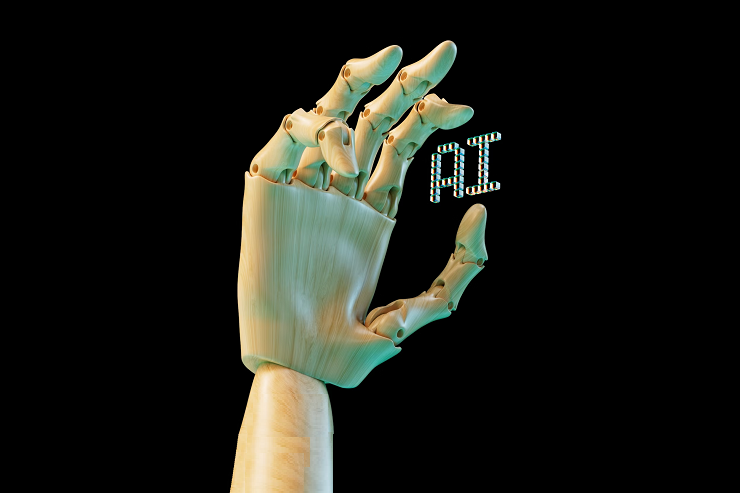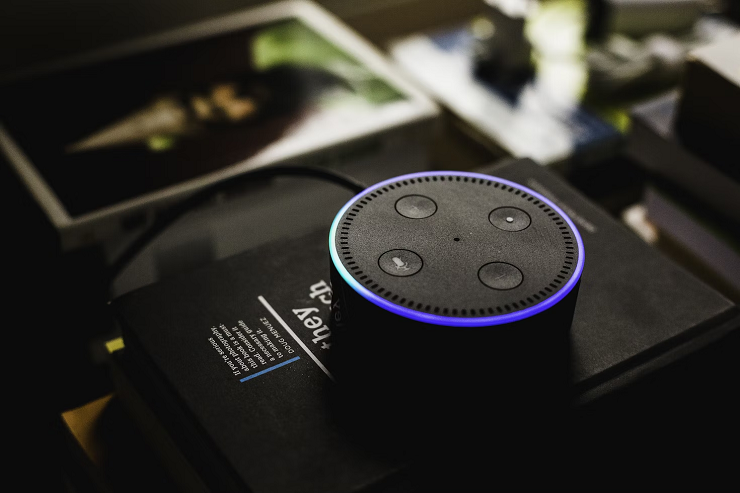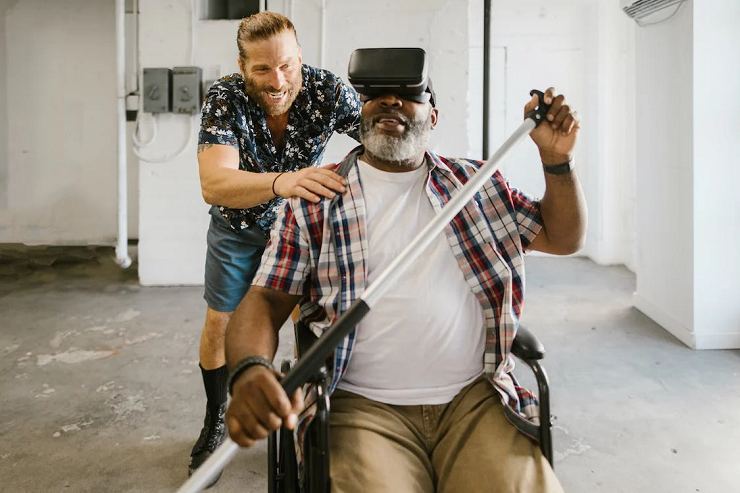

The sight of seniors struggling with once-simple tasks like reading labels at the grocery store or having a conversation on the phone is all too common. Declining cognitive and physical abilities that come with aging present difficulties in everyday living. However exciting advances in artificial intelligence are enabling new assistive technologies tailored specifically for the needs and abilities of the elderly population.
AI is making what were once speculative sci-fi concepts into realities that seniors can benefit from today. Homes are becoming smarter, robots are growing more helpful, vehicles are taking the wheel, and devices are linking people together in new ways. AI is already transforming senior living and the best is yet to come.
Let’s look at some of the promising ways AI can enhance the quality of life and independence for the elderly:
Having an extra pair of eyes and ears in the home can make all the difference for aging seniors. AI-powered sensors can now track wellness and safety without the need for cameras or microphones. Radar-based systems like Caregiver detects motion, falls, and anomalies in daily activity patterns. They alert family members or caregivers to any possible issues so help can be provided swiftly.
Voice-activated assistants like Alexa and Google Home are becoming virtual companions for the elderly. These AI assistants can provide medication and appointment reminders, place calls, control appliances, and entertainment by voice command, and summon emergency assistance if needed. Chatbots are being designed to check in daily and have genuine two-way conversations to stimulate social engagement.

Robots are also entering the home. Machines like Mabu from Catalia Health dispense medication, monitor symptoms, engage in cognitive exercises, and provide comfort through pet-like interactions. They can also connect seniors with care providers via video chat for virtual assistance as needed. AI is making independent living safer and less isolating.
The human touch of doctors will always be indispensable. However, AI is augmenting their abilities in ways that benefit the geriatric population. Algorithms analyze patient data and medical history to identify those at risk of conditions like heart failure or diabetes before symptoms escalate. This allows for earlier intervention.
Wearable devices are also giving doctors an unprecedented window into the daily health patterns of seniors. Data gathered on activity levels, posture, gait, sleep quality, heart rate, and more enable customized care. If anomalous results are detected, preventative measures can be taken. Patients are empowered to manage health proactively rather than just reactively.
AI chatbots are being designed as virtual nurses to help elderly patients track medications, vital signs, and symptoms between visits. They can determine if a doctor needs to be consulted based on the specifics. Therapeutic bots lead seniors through cognitive exercises personalized for their needs. Even surgical robots are enabling less invasive procedures with faster recovery times.

One of the biggest impacts of aging is a loss of mobility, but AI is working to change that. Once self-driving car technology matures, seniors will gain independence and convenience. Smart wheelchairs powered by AI will safely navigate users around obstacles both indoors and out.
Voice-controlled navigation apps optimized for elder users are in development. They provide simplified visual and tactile guidance to destinations while minimizing distracting information. For those unable to drive, AI-scheduling software plans multi-leg transport via rideshare, volunteer drivers, or autonomous vehicles as they become available. The AI considers senior-friendly routes, wait times, pickup/drop-off accessibility, and current traffic conditions to maximize comfort.
Isolation takes a steep emotional toll on the elderly. Social chatbots aim to change this through daily check-in conversations that provide companionship. AI can curate customized music playlists that trigger memories and positive engagement. Even robotic animals like Hasbro’s Joy for All cats and dogs provide soothing pet-like companionship.
For seniors still living independently, smart displays powered by AI assistants like Alexa Show allow loved ones to video call, share photos, leave video messages, and remotely monitor the home environment. Immersive tablet-based games and chat environments also enable seniors to meaningfully interact. The AI customizes the experience for accessibility. Being that technology sometimes baffles seniors, an AI Tech Concierge such as Jortty can assist with tech support related tasks and help them identify scam emails, get answers to tech queires or even find tech support.

Ease of use has long been a barrier to technology adoption for the elderly. AI and automated product design techniques are now enabling user interfaces tailored to seniors’ abilities. Voice control accommodates limited mobility and vision. Smart agents gauge individuals’ skill levels and adjust device training accordingly. Machine learning allows interfaces to improve with use. Settings automatically adapt to changing needs, like increasing text size as eyesight worsens over time. The technology fits the senior.
Managing money only gets harder with age-related cognitive decline. AI programs are already assisting with common tasks like bill payments, balancing checkbooks, spotting fraudulent activity, and monitoring investments. Dedicated AI financial assistants from companies like TRUE Link are designed expressly for seniors. They simplify money management and software agents can restrict exploitation by bad actors.
Neural networks learn users spending and savings patterns over time and advise adjustments to ensure adequate income and reserves. The AI can also provide guidance on advanced care and end-of-life planning options tailored to an individual’s financial situation.
This sampling of AI applications illustrates the spectrum of benefits this technology can offer seniors today and in the future. However, realizing the full potential requires work from various stakeholders. As the number of adults over 65 grows rapidly in the coming decades, it will be critical for policymakers to incorporate AI into programs and communities that support aging with dignity.
Device and software designers must include senior-specific needs, abilities, and perspectives from the start of the design process. User testing and iterative refinement with actual elderly users are essential. Caregivers, assisted living facilities and communities also need training to leverage AI tools effectively.
There are still challenges surrounding access and adoption. But thinking inclusively about how AI can enhance the complete landscape of senior living will allow society to recognize the promise of longevity rather than just the problem of it. The old golden years can truly be golden.

I’m a Nerd and very proud of it! I love to write about anything Tech related. Subscribe to our blog for helpful tips, tricks & news.




